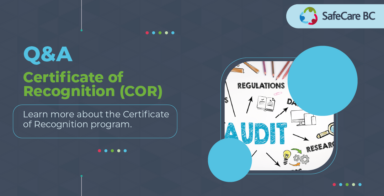Certificate of Recognition (COR) - FAQ
Want to show your commitment to health and safety—and save a bit of money? The Certificate of Recognition (COR) program is a voluntary WorkSafeBC program that recognizes and financially rewards employers that have proactively elevated...









